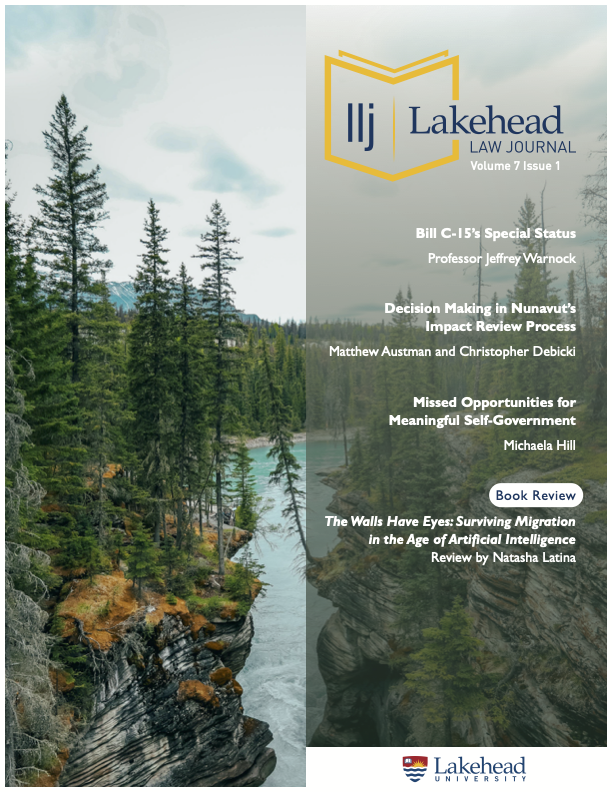Decision-making in Nunavut’s Impact Review Process
Searching for answers in a novel legal landscape
Abstract
Nunavut’s environmental impact review regime, which regulates development in Canada’s largest and least developed territory, is situated within a unique legal context that raises unresolved questions about the relationship between the Nunavut Impact Review Board (NIRB) and the federal government. The Nunavut Agreement—one of Canada’s modern treaties—and the Nunavut Planning and Project Assessment Act (NuPPAA) assign final decision-making authority over natural resource projects to a responsible minister. However, these decision-making provisions must be understood in context of the intent and purposes of the Nunavut Agreement and the duty to consult and accommodate. While an ordinary reading of the decision-making provisions suggests the federal government has de-facto veto power over NIRB determinations, such narrow interpretation ignores the purposes of the Nunavut Agreement to protect Inuit rights to input in land and natural resource management, as well as the NIRB’s responsibility to protect the ecosystemic integrity of the settlement area. A purposive approach supports a view that the federal government’s power is intended to ensure that NIRB determinations comply with the purpose and terms of the Nunavut Agreement. In effect, the NIRB is the primary decision-maker, tasked with carrying out the duty to consult and accommodate, and determining whether a project should proceed and under what terms and conditions. In turn, the federal government exercises an oversight role over NIRB determinations, and if the minister varies or rejects a NIRB determination, their final decision must be reasonably consistent with the Nunavut Agreement and the duty to consult.
Downloads
Published
Issue
Section
License
Authors retain original copyright and grant the LLJ first publication rights. Articles published in this open access journal are free to use, with proper attribution, for educational and non-commercial purposes.


